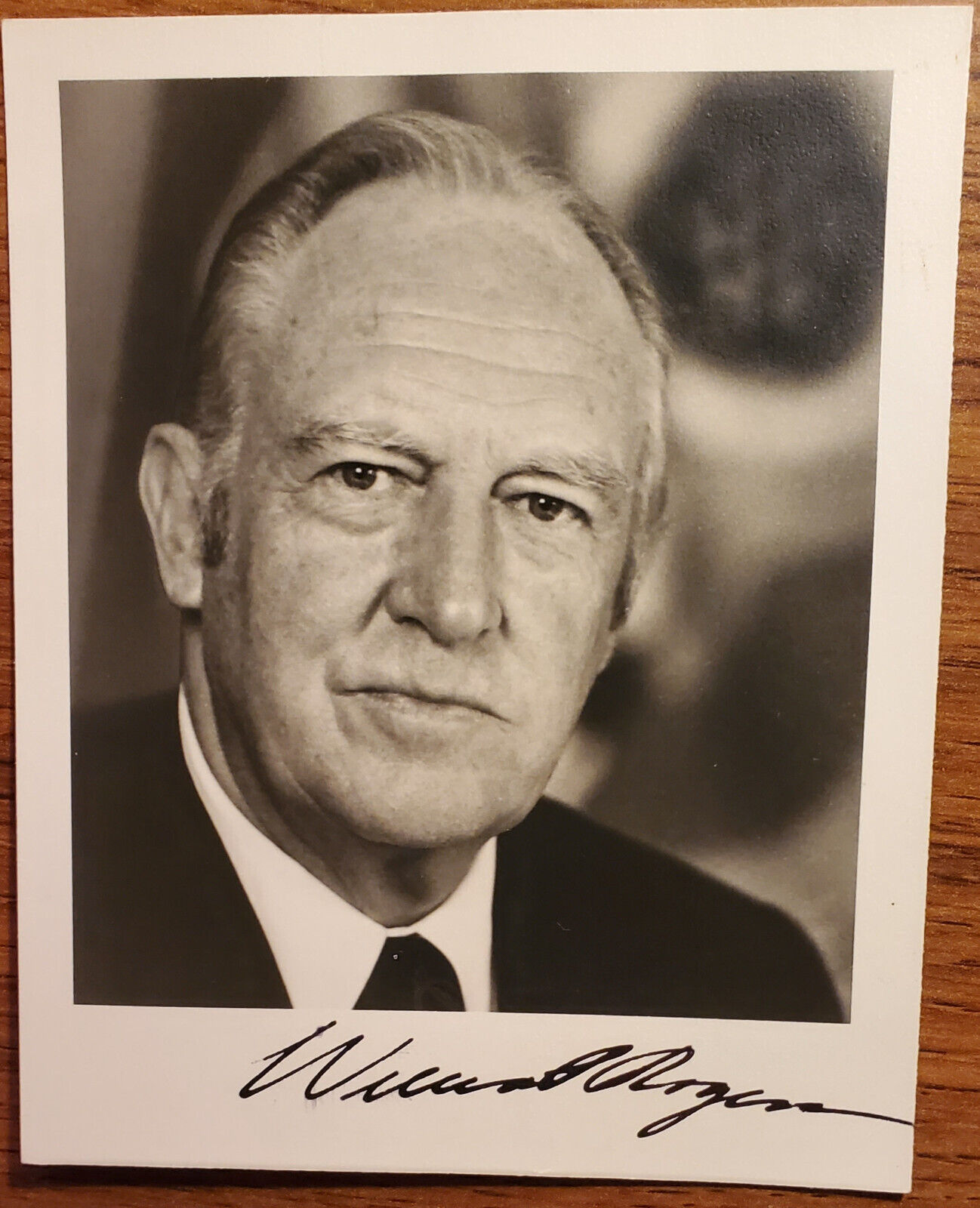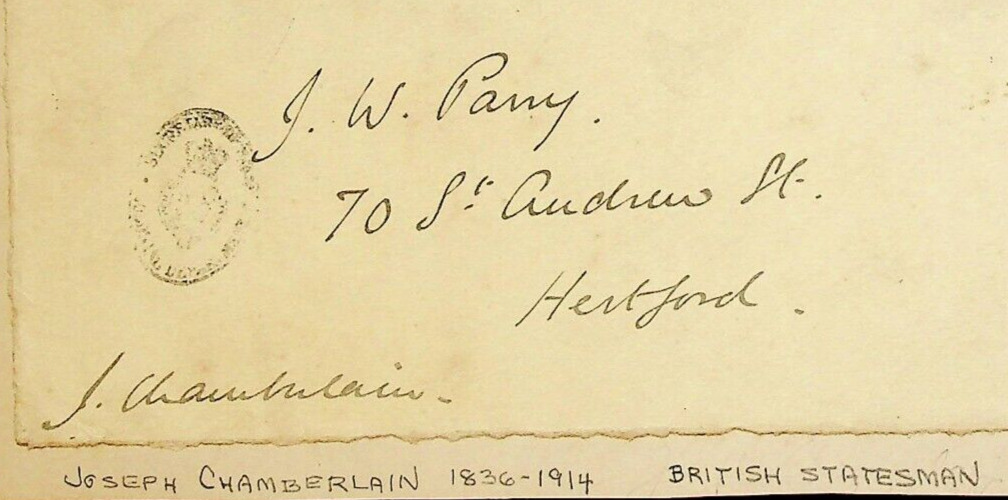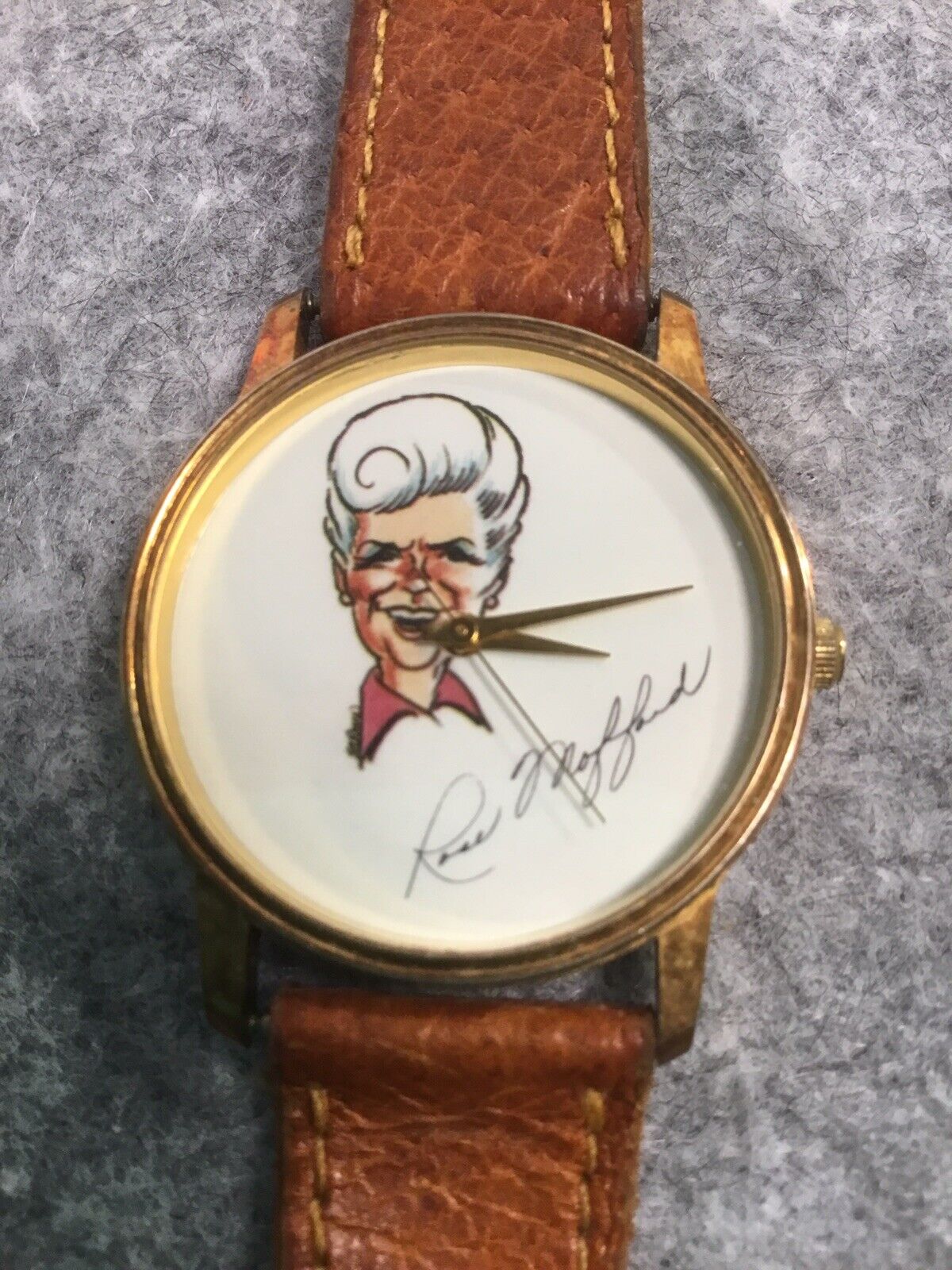-40%
William P. Rogers - 4x6 autographed photo - Nixon Secretary of State
$ 18.45
- Description
- Size Guide
Description
Incredibly accomplished person and politician, served multiple governmental and private positions of importance. 4x6 signed photo.Multiple purchases may be combined to reduce shipping charges. Shipments to non-USA addresses will be charged actual charges, no additional packaging or handling charges. Please notify seller of any foreign address before making payment.
Wikipedia article follows:
++++++++++++++++++++++++++++++++++++++++++++
William Pierce Rogers
(June 23, 1913 – January 2, 2001) was an American diplomat and attorney. He served as
United States Attorney General
under
President
Dwight D. Eisenhower
and
United States Secretary of State
under President
Richard Nixon
. Despite Rogers being a close confidant of Nixon,
National Security Advisor
Henry Kissinger
overshadowed Rogers and eventually succeeded him as Secretary of State.
[1]
Rogers was the last surviving member of the cabinet of Dwight D. Eisenhower.
Early life and education
Rogers was born June 23, 1913, in
Norfolk, New York
.
[1]
After the death of his mother, the former Myra Beswick, he was raised during his teen years by his grandparents in the village of
Canton, New York
. He attended
Colgate University
, where he was initiated into the
Sigma Chi
fraternity. He then attended
Cornell Law School
, where he was an editor of the
Cornell Law Quarterly
.
[2]
He received his
LL.B.
in 1937, graduating fifth in his class of 47
[3]
[4]
as a member of the
Order of the Coif
, passing the New York bar in the same year.
[1]
Career
After serving about a year as an attorney for a
Wall Street
law firm, he became an assistant district attorney in 1938 and was appointed by
District Attorney
Thomas E. Dewey
to a 60-man task force aimed at routing out New York City's
organized crime
.
[
citation needed
]
Rogers entered the
Navy
in 1942, serving on the
USS
Intrepid
, including her action in the
Battle of Okinawa
. His final rank was lieutenant commander.
[
citation needed
]
Government service
After the war, Rogers joined the United States Congress as a
committee counsel
.
Alger Hiss and Elizabeth Bentley
While serving on a
Senate
committee, Rogers examined documentation from the
House Un-American Activities Committee
's investigation of
Alger Hiss
at the request of Representative
Richard M. Nixon
. He advised Nixon that Hiss had lied and that the case against him should be pursued.
[
citation needed
]
On August 17, 1948, Senator
Homer S. Ferguson
, chairman of a Senate subcommittee on expenditures in the executive department, stated by speech and letter that the Office of the
United States Attorney General
had approved its espionage investigation that had started with
Elizabeth Bentley
on July 28. Ferguson denied that his subcommittee "has in any way interfered with any criminal prosecution." Ferguson's letter explained that counsel William P. Rogers had consulted with the Attorney General's assistants on June 9. He stated that Rogers had "advised them of our purpose and the procedure planned to be followed, the witnesses who were to be called and the questions they would be asked." That evening, Attorney General
Tom C. Clark
wrote a letter that contradicted Ferguson as to whether and when Ferguson's committee had "cleared" its public hearings with him. Clark's letter stated it was "incorrect" that by June 9, 1948, Fergusons' subcommittee had told his office about its intention. Instead, the USAG had heard of the subcommittee's intentions as those public hearings started on July 28. Clark wrote, "It is difficult to say how much damage the efforts to arrive at a sound basis for prosecution in the espionage case has been done by the open hearings." The story broke in newspapers next day.
[5]
Private practice
In 1950, Rogers became a partner in a
New York City
law firm,
Dwight, Royall, Harris, Koegel & Caskey
. He thereafter returned to the firm when he was not in government service.
Rogers advised Nixon in the
slush fund
scandal, which led to Nixon's
Checkers speech
in 1952.
[
citation needed
]
U.S. Deputy Attorney General
Rogers joined the Administration of President
Dwight D. Eisenhower
as
Deputy Attorney General
in 1953.
As Deputy Attorney General, Rogers had some role in or insight into the process that led to the execution of
Julius and Ethel Rosenberg
for espionage.
[6]
As deputy attorney general, Rogers was involved in the
Little Rock Integration Crisis
in the fall of 1957 of
Central High School
in
Little Rock, Arkansas
. In that capacity, he worked with
Osro Cobb
, the
United States Attorney for the Eastern District of Arkansas
, to implement federal orders and to maintain peace in the capital city. Cobb would recall in his memoirs that Rogers called him to discuss the possibility of violence: "Our conversation was somewhat guarded. I had never recommended the use of federal troops, and Rogers asked if I thought they were necessary. I told him I hoped not. Then to my surprise he stated, 'They are on their way already.'"
[7]
U.S. Attorney General (1957–1961)
Rogers served as
Attorney General
from 1957 to 1961. He remained a close advisor to Vice President Nixon throughout the Eisenhower administration, especially during Eisenhower's two medical crises. Rogers became attorney general upon the resignation of his superior,
Herbert Brownell Jr.
, who had worked to implement the desegregation of Little Rock Central High School. In 1958, Little Rock closed its public schools for a year to oppose further desegregation required by the U.S. government. At the time, Rogers said, "It seems inconceivable that a state or community would rather close its public schools than comply with decisions of the
Supreme Court
."
[8]
In 1959,
Martin Luther King Jr.
hailed Rogers for advocating the integration of an elementary school in Alabama that had excluded the children of black military personnel.
[9]
Private practice
He returned to his law practice, now renamed to
Rogers & Wells
, where he worked until his early eighties. He played an important role in
New York Times Co. v. Sullivan
a 1964 case before the Supreme Court.
From 1962 to 1963, Rogers was head of the
Federal City Council
, a group of business, civic, education, and other leaders for the economic development in Washington, DC.
[10]
[11]
U.S. Secretary of State (1969–1973)
He succeeded
Dean Rusk
as
Secretary of State
in the
Nixon administration
from January 22, 1969, to September 3, 1973. Nixon had long distrusted the State Department, whom he had accused under the Truman administration of being staffed with liberal diplomats who were insufficiently anti-communist and who were responsible for the "
loss of China
" in 1949.
[12]
Given his dislike of the State Department, Nixon when he came into office in 1969 wanted to conduct his foreign policy via the National Security Council in a bid to marginalize the State Department.
[13]
Nixon had selected an ambitious political science professor from Harvard,
Henry Kissinger
, to be his national security adviser who soon emerged as his main adviser on foreign affairs.
[13]
Nixon selected Rogers to be the secretary of state because he knew nothing of foreign affairs and was unlikely to assert the interests of the State Department.
[13]
On Nixon's Inauguration Day, 20 January 1969, Rogers was handed a lengthy volume containing a summary of the world's major issues written by the State Department's leading experts in order to brief him for his new job, leading him to remark in surprise: "You don't expect me to read all this stuff, do you?"
[14]
Rogers's ignorance of foreign policy issues and his unwillingness to assert the interests of his department duly led to the State Department pushed to the sidelines under his stewardship with the major decisions taken by Kissinger with no input or even the knowledge of Rogers.
[13]
Kissinger later said of Rogers, "Few secretaries of state can have been selected because of their president's confidence in their ignorance of foreign policy."
[15]
In February 1969, Nixon began to discuss plans to bomb the Viet Cong and North Vietnamese bases just over the border in Cambodia, which Rogers felt was unwise, warning that such an bombing offensive might damage the peace talks in Paris.
[16]
On 16 March 1969, Rogers attended a meeting at the White House where Nixon discussed
Operation Menu
, the plans to bomb Cambodia in secret.
[17]
Though the State Department's experts stated that the main source of weapons for the Viet Cong as the Ho Chi Minh Trail coming down from North Vietnam via Laos, not Cambodia, Rogers had not read their assessments.
[17]
At the 16 March meeting, Rogers offered the most tepid opposition to the plan to bomb Cambodia, which began the next day.
[17]
One of his notable aims was to initiate efforts at a lasting peace in the
Arab–Israeli conflict
by the so-called
Rogers Plan
on 3 December 1969. Throughout his tenure, however, his influence was curtailed by Nixon's determination to handle critical foreign policy strategy and execution directly from the White House through his
national security adviser
Henry Kissinger
.
On the night of 21 February 1970, Kissinger first met in secret with the North Vietnamese diplomat Le Duc Tho in a house in Paris suburb, opening a new set of talks that were independent of the official peace talks in Paris.
[18]
Kissinger only first informed Rogers of the secret talks in Paris parallel to the official talks in February 1971, a year later.
[19]
On 23 March 1970, Rogers told the press that the United States had the utmost respect for the "neutrality, sovereignty and independence" of Cambodia, stating categorically there no plans to invade Cambodia.
[20]
In the same press conference, Rogers stated: "We don't anticipate that any request will be made" for help from the new Lon Nol government.
[21]
Unknown to him, Nixon and Kissinger were already discussing plans to invade Cambodia.
[22]
On 30 April 1970, the United States invaded Cambodia.
On October 15, 1973, Rogers received the
Presidential Medal of Freedom
from Nixon. At the same ceremony, his wife, Adele Rogers, was presented with the
Presidential Citizens Medal
.
Later life
Ronald Reagan
asked Rogers to play the US president in IVY LEAGUE 82 (March 1982), a
command post exercise
of American nuclear forces under
SIOP
.
[23]
Rogers led the investigation into the explosion of the space shuttle
Challenger
. The
Rogers Commission
was the first investigation to criticize
NASA
management for its role in negligence of safety in the
Space Shuttle
program. Among the more famous members of Rogers's panel were astronauts
Neil Armstrong
and
Sally Ride
, Air Force general
Donald Kutyna
, and physicist
Richard Feynman
.
[24]
Rogers worked at his law firm, now renamed
Clifford Chance Rogers & Wells
after a 1999 merger, in its Washington office until several months before his death.
[
citation needed
]
Personal life
Rogers married Adele Langston (August 15, 1911 – May 27, 2001), a fellow law student whom he had met at Cornell. They had four children.
[1]
William P. Rogers died of
congestive heart failure
, at the Suburban Hospital in
Bethesda, Maryland
, on January 2, 2001, at the age of 87.
[1]
Rogers was buried in
Arlington National Cemetery
.
Legacy
In 2001, the Rogers family donated to Cornell Law Library materials to reflect the lives of William and Adele Rogers, mostly from 1969 to 1973.
[25]
Publications
Articles
“U.S. Foreign Policy: A Discussion with Former Secretaries of State Dean Rusk, William P. Rogers, Cyrus R. Vance, and Alexander M. Haig, Jr.”
.
International Studies Notes
, Vol. 11, No. 1,
Special Edition: The Secretaries of State
, Fall 1984.
JSTOR
44234902
(pp. 10–20)









